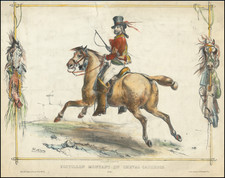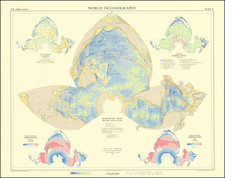This early woodcut map of Europe, by Benedetto Bordone, holds a unique position in the history of cartography as one of the earliest printed maps of the European continent.
The map provides a fascinating snapshot of Europe as it was understood in the early 16th century, including regions from North Africa in the south to Norway in the north, as well as the Mediterranean Sea.
On the verso features a detailed index of islands and their corresponding locations. The left side lists islands alphabetically and provides details on the seas or regions where these islands are found, such as the western ocean, the Sea of Marmara, the Adriatic Sea, the Mediterranean Sea, and the
The right side of the image includes a diagram of a globe, illustrating the Earth's climatic and astronomical zones like the Arctic Circle, Tropic of Cancer, Equator, Tropic of Capricorn, and Antarctic Circle. Below this are representations of old and modern wind roses, essential tools for navigation. These diagrams reflect the advanced geographic knowledge and navigation techniques of the time, aiding sailors in their voyages and contributing to the era's exploration achievements.
Benedetto Bordone (1460-1531) was a polymath who was born in Padua and worked in Venice. He was an illuminator, engraver, miniaturist, editor, and geographer. It is possible he made the first globe in Italy. His most famous work is the Isolario, or Book of Islands, which included many of the earliest printed maps of islands in the New World.
Bordone, a prominent Venetian manuscript editor, miniaturist, and cartographer, was born in Padua, a city that was then part of the Republic of Venice. Although his exact date of birth remains unknown, historical records indicate that his parents married in Padua in 1442, and he himself was married in 1480. Bordone's contributions to the field of cartography, particularly through his seminal work, Isolario, have cemented his legacy as a pivotal figure in the Renaissance cartographic tradition.
Bordone's most renowned work, Isolario (The Book of Islands), printed in Venice in 1528, is a comprehensive compilation that describes all the known islands of the world. The book offers detailed accounts of each island's folklore, myths, cultures, climates, geographical situations, and historical narratives. It stands as a testament to the popularity of the isolario genre in 15th and 16th century Italy and serves as an illustrated guide for sailors, incorporating the era's latest transatlantic discoveries.
One of the notable features of Isolario is an oval depiction of the world, a map type invented by Bordone. This innovation was later formalized into the equal-area elliptical Mollweide projection three centuries afterward. Bordone's map portrays a distorted view of the New World, showing only the northern regions of South America and depicting North America as a large island labeled Terra del Laboratore (Land of the Worker), a likely reference to the region's active slave trade during that period, which also influenced the name Labrador.
The book also contains the earliest known printed account of Francisco Pizarro's conquest of Peru, making it a significant historical document. Among the numerous woodcut maps included in Isolario, twelve are dedicated to the Americas. These maps feature a plan of "Temistitan" (Tenochtitlan, modern Mexico City) before its destruction by Hernán Cortés, and a map of Ciampagu, the earliest known European-printed map of Japan depicted as an island.
Benedetto Bordone's familial connections are also of interest; he is reputed to have been the father of Julius Caesar Scaliger, a noted classical scholar, and the grandfather of Joseph Justus Scaliger, who is recognized as the founder of the science of historical chronology. The original maps from Bordone's Isolario are highly valued today for their historical significance and intricate craftsmanship. Through his work, Bordone has left an indelible mark on the history of cartography, providing invaluable insights into the geographical knowledge and cultural perceptions of his time.









![La Sphere Artificielle . . . 1740 [Terrestrial, Celestial & Armillary Globes]](https://storage.googleapis.com/raremaps/img/small/80300.jpg)

![[Ion Powered Spacecraft Traveling To Mars]](https://storage.googleapis.com/raremaps/img/small/83629.jpg)

![(Rare copperplate edition!) Asia Secunda Pars Terrae in Forma Pegasi [Asia in the Form of Pegasus]](https://storage.googleapis.com/raremaps/img/small/82046.jpg)
